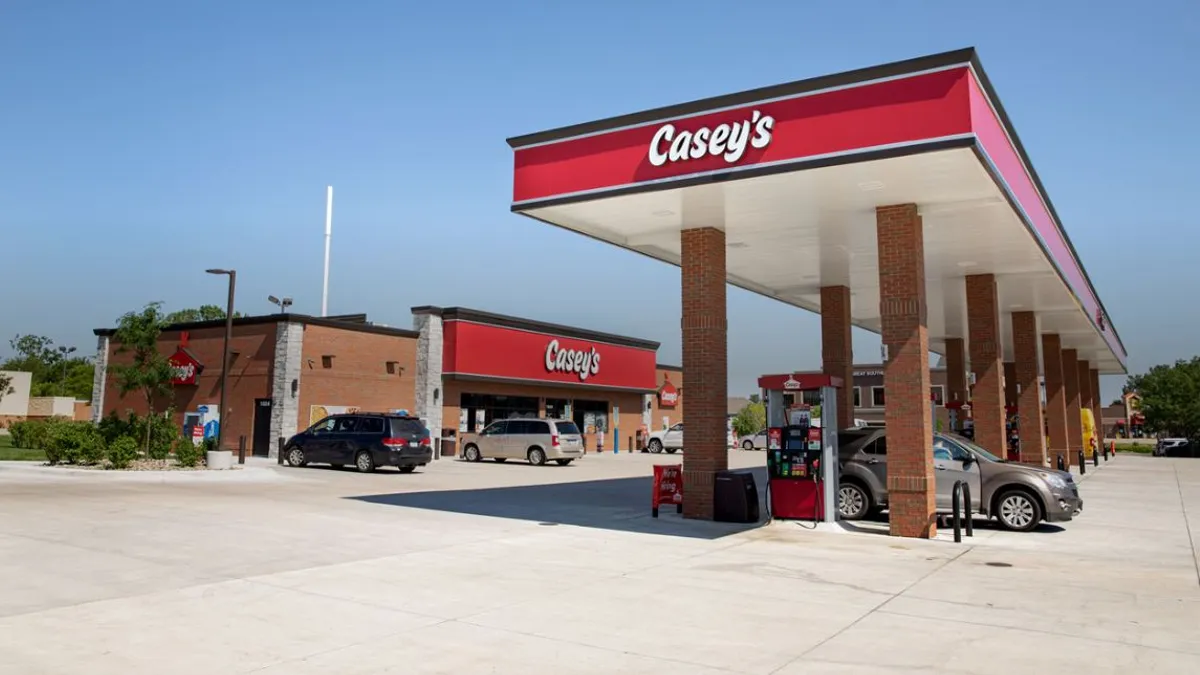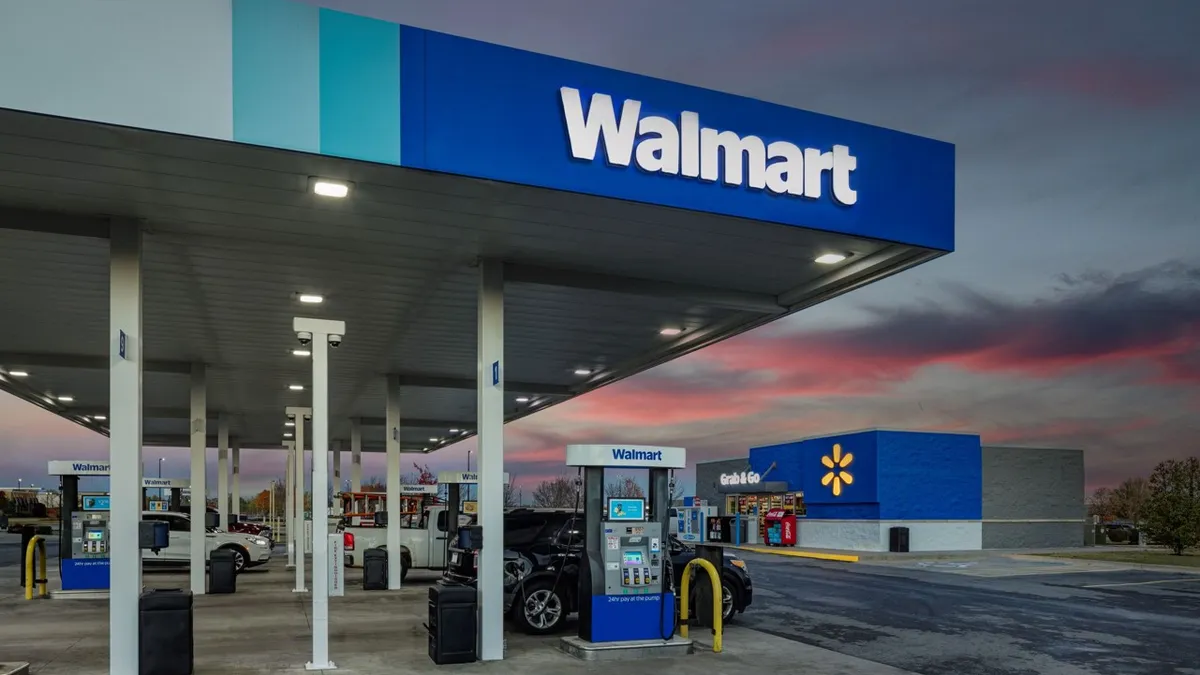Electric vehicles are becoming more prevalent on U.S. roadways, and that’s pushed many convenience store operators to consider adding chargers, if they haven’t already begun the process.
EV chargers allow c-stores to expand their role as fueling stops, and the amount of time that even direct-current fast chargers — the sort of EV chargers that can charge a car to 80% in under an hour — require gives c-stores a few more minutes to tempt drivers with other offers.
But in the budding world of public fast chargers, there are plenty of reasons for c-store operators to be concerned and plenty of issues to be aware of.
Some problems, like the quality of cybersecurity at chargers, are in the hands of the vendors who need to meet certain standards, and not the retailers who installed them. And how profitable EV charging is may be both near-term and long-term remains up in the air.
Yet there are other pitfalls retailers can learn about and plan for, experts say, as c-stores wade into the world of EV charging.
Wrong place or wrong time
The biggest potential pitfall for c-store companies is building EV chargers before a specific market is ready for them.
“Probably Nebraska, you don't need it so much,” said John Eichberger, executive director of the Fuels Institute, a nonprofit advocacy group focused on transportation energy, in an earlier interview. “But if you are in Florida or New York or even Texas, there's certain markets where [demand is] pretty strong.”
Because of the expense of putting chargers in, as well as the space they take up on the forecourt, putting in stations that generate little to no returns could be a big burden, especially for smaller stores.
Right now, the most important thing for retailers to ask is if their sites are right for EV charging at the present time.
“Initial siting and location is the key to profitability,” said Michael Hedges, vice president of sales for Power Management Co., a specialized energy consulting firm and product developer, in an email interview.
High startup costs
Even if the store is in an ideal location to tackle EV charging, the chargers themselves are still a big investment. DC fast chargers cost tens of thousands of dollars per unit.
“But the station itself isn't necessarily the biggest cost,” John Voelcker, who covers EVs and analyzes the industry for Car and Driver and other outlets, wrote in an email interview. “That may be the electrical service, the trenching and underground cabling, and other site work.”

And once the chargers are online, surges in use can cause big increases in demand charges — a fee customers pay to maintain the electric infrastructure, based on peak usage — so one high-demand day could bump up that fee going forward.
There are ways for companies to mitigate some of these costs. Stores in certain locations may be able to apply for National Electric Vehicle Infrastructure (NEVI) program funding, if they meet the guidelines like operating in approved areas and having a site with a lot of amenities. Not all sites or EV chargers will require extensive electrical service upgrades. Battery-assisted chargers can avoid the problem. There may also be assistance available from government sources, or from manufacturers.
“Some EV manufacturers allow you to limit or control the charging rate on their equipment to manage utility expenses, particularly demand charges that can make up 30-50% of a company’s energy bill,” said Hedges.
Sites not set up for EV customers
Unlike filling a tank with gas, charging an EV can currently take up to an hour or more. This can leave the driver with some time to kill.
“That's a totally different customer, that has totally different needs,” said Mike Lawshe, president and CEO of store design firm Paragon Solutions, in an earlier interview. “And I'm not just talking about the fuel. They have an extended period of time on site.”
This is where the growing push for better fresh food offerings can come in handy. “Offering the ‘one-stop-shop’ will help drive traffic, or offerings of fast food or prepared food along with typical convenience items,” said Hedges.
“This is an investment for the future,” wrote Voelcker. “But those stores can get repeat business from the same drivers if they make sure the charging station works properly, any maintenance issues are resolved promptly, and it's kept clean and free of litter and graffiti.”
Voelcker also said that making sure EV-enabled locations listed on apps like Plugshare, Chargeway and A Better Route Planner are accurate and up-to-date can encourage customers to come back.
Maintenance Issues
Keeping the chargers up and running is another potential pitfall. Because chargers are less plentiful than gas stations currently, drivers rely on existing EV chargers working when they pull up, since there may not be another one nearby.
“EV drivers live from charging station to charging station, particularly during long distance travel,” said Hedges in an email interview.
Chargers being down can be stressful for potential customers. A University of California study conducted in April 2022 in San Francisco found less than three-quarters of the DCFCs they tested at the time worked correctly.
Hedges wrote that a lot of the current maintenance issues can be attributed to companies trying to ramp up as demand grows. “Global supply chains have certainly made maintenance, particularly replacement parts, more of an issue recently,” he said.
There’s also the potential of vandals hitting machines. “The situation is worse for EV charging because the charging cables themselves have a lot of valuable copper cable in them, an attractive theft lure,” Voelcker wrote.
And sometimes it’s not the charging station itself that’s causing the problem.
“The biggest single point of failure is the connectivity and payment-validation hardware,” Voelcker wrote. “The Electrify America network software requires its charging sites to default to FREE if they lose connectivity or something else goes wrong.”

Poor customer experience
Finally, there’s the matter of making sure your site is physically set up and prepared for customers looking to charge their vehicles. Voelcker said that because charging an EV takes longer than filling up a car with gas most of the time, it opens the site up to unique challenges.
“Is the charging site clearly marked, ‘Parking for EVs while charging only,’ to prevent others from parking there and blocking a charger?” he wrote.
John Tuccillo, global head of corporate and government affairs for ADS-Tec Energy, added that retailers need to put as much thought into the placement of and customer experience at their EV chargers as they do their fuel pumps.
“They don’t always realize there is a lot more involved than just dropping a box, even if the business case is solid,” he said.
Voelcker added that companies can also falter by not properly training their staff on what to do when a charger is out of commission. A lack of protocol could lead to delayed repairs and frustrated customers, he noted.
But in the end, if EV charging looks like the right move for a specific location, retailers could be better served by dealing with these issues and moving ahead with EV charging.
“A decision to proceed with EV charging should be made based on the set of economics (price, expected revenue and performance of the chosen EV technology) available today, not what might be available in the future,” said Hedges. “ Unfortunately, EV drivers being served today cannot wait for next iterations.”




















